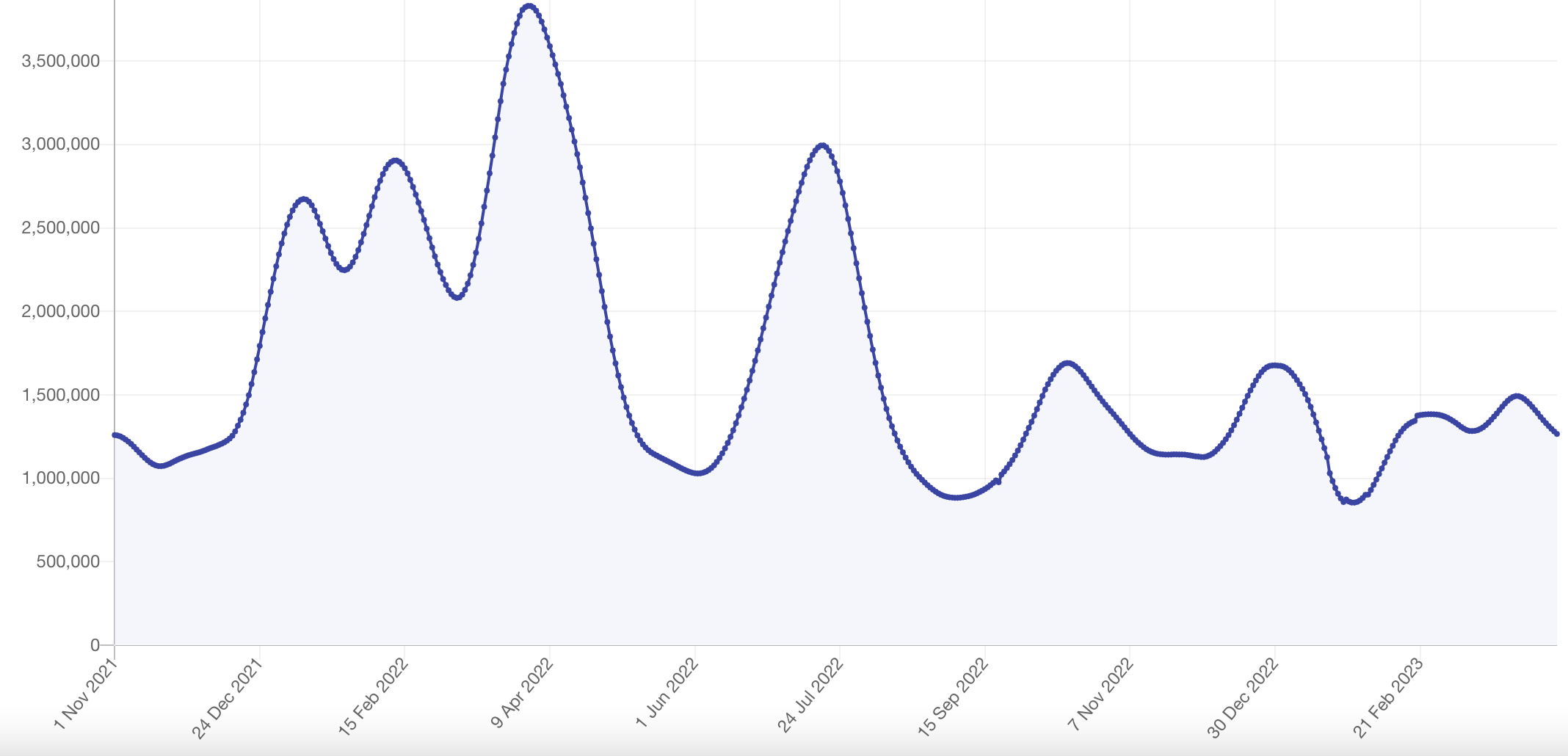Mapped: Worst areas in UK for Covid cases amid fears over new Arcturus variant
Variant has seen cases in India soar in past month, as virologists warn UK ‘not yet out of the woods’
England’s North East currently has the highest Covid infection rate of any UK region, according to new figures from the Zoe Health Study app.
Nearly 1.25 million people are currently thought to have symptomatic coronavirus in the UK, according to the Zoe Covid study, whose estimates are based on users self-reporting symptoms and test results.
This is down from a recent peak of nearly 1.5 million suspected symptomatic infections a fortnight ago, which itself was below previous highs of more than 1.6 million over New Year and in mid-October.

The ongoing study, run by King’s College London, found that rates of daily new symptomatic infections are highest in England’s North East, where there are potentially as many as 2,188 new daily cases per million people, based on data from Wednesday.
There are estimated to be up to 1,716 new cases per million in the West Midlands, which is followed closely by Scotland and the North West.
These infection rates contrast with an upper estimate of 1,301 new daily cases per million people in the South East. Overall, there were estimated to be more than 81,000 new symptomatic cases of Covid in the UK on Wednesday, according to Zoe app data.
The study is among the most reliable trackers of infection levels in the UK, not least since the end of the Office for National Statistics’ figures stopped last month, leaving Britain “completely in the dark”.
The map below shows estimated rate of new daily symptomatic Covid cases per million people in each region, detailing the upper and lower range of the estimates, based on data from Wednesday:
It comes as virologists warn that a new coronavirus variant named “Arcturus” shows the UK is “not yet out of the woods” when it comes to Covid.
India’s health ministry has launched mock drills to test whether hospitals are ready for a possible influx of patients after infections soared 13-fold in the last month, surpassing 10,000 cases each day.
The rise has been blamed on the new Omicron sub-variant XBB.1.16, which the UK Health Security Agency (UKHSA) said in March’s variant report has made its way to Britain.
So far in the UK, Arcturus accounts for just 0.4 per cent of cases, according to the Washington-based GISAID virus sequencing database.
But that share is expected to change, with virologists telling The Independent on Thursday that the new variant “rapidly outcompeting” others in India.
Dr Vipin M Vashishtha, a paediatrician tracking Arcturus’s rise in India, said cases there were increasing “exponentially”, adding: “It’s difficult to uniformly say it will cause large outbreaks globally but considering the mutations to it, this variant will lead to a higher rate of infection and may prove to be more aggressive.”
Meanwhile, virologist Dr Stephen Griffin from the University of Leeds said the new strain could become dominant in the UK.
“Arcturus has a growth advantage of about 1.2 compared to what we’ve had recently,” Dr Griffin told The Independent. “It’s conceivable it could outcompete what we’ve had recently but there are other variants in the mix so it’s hard to know which one will become dominant.”




Join our commenting forum
Join thought-provoking conversations, follow other Independent readers and see their replies
Comments